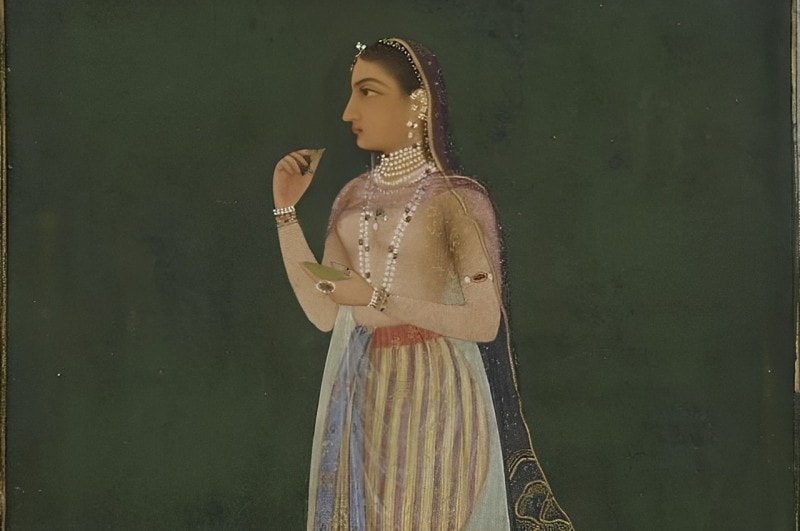
Table of Contents
India’s rich history in jewelry shines brightest during the Mughal era. Known for its luxurious and intricate designs, Mughal jewelry marks a high point in the art of ornamentation, blending creativity with cultural depth.
Western jewelry trends often trace back to the East, highlighting the need to explore the Mughal Empire’s impressive legacy. This era didn’t just enhance India’s jewelry craftsmanship; it set global standards. Let’s explore the splendor of Mughal jewelry and its lasting impact on today’s designs.
Origin and History of Mughal Jewelry
The history of Mughal jewelry is closely linked with India’s diverse past, where many dynasties rose and fell. The Mughal dynasty, also known as Moghul, Mogul, or Mughūl, was a major force. Originating from Turkic-Mongol ancestry, it started ruling northern India in 1526 AD and lasted until the British defeated it in 1857.
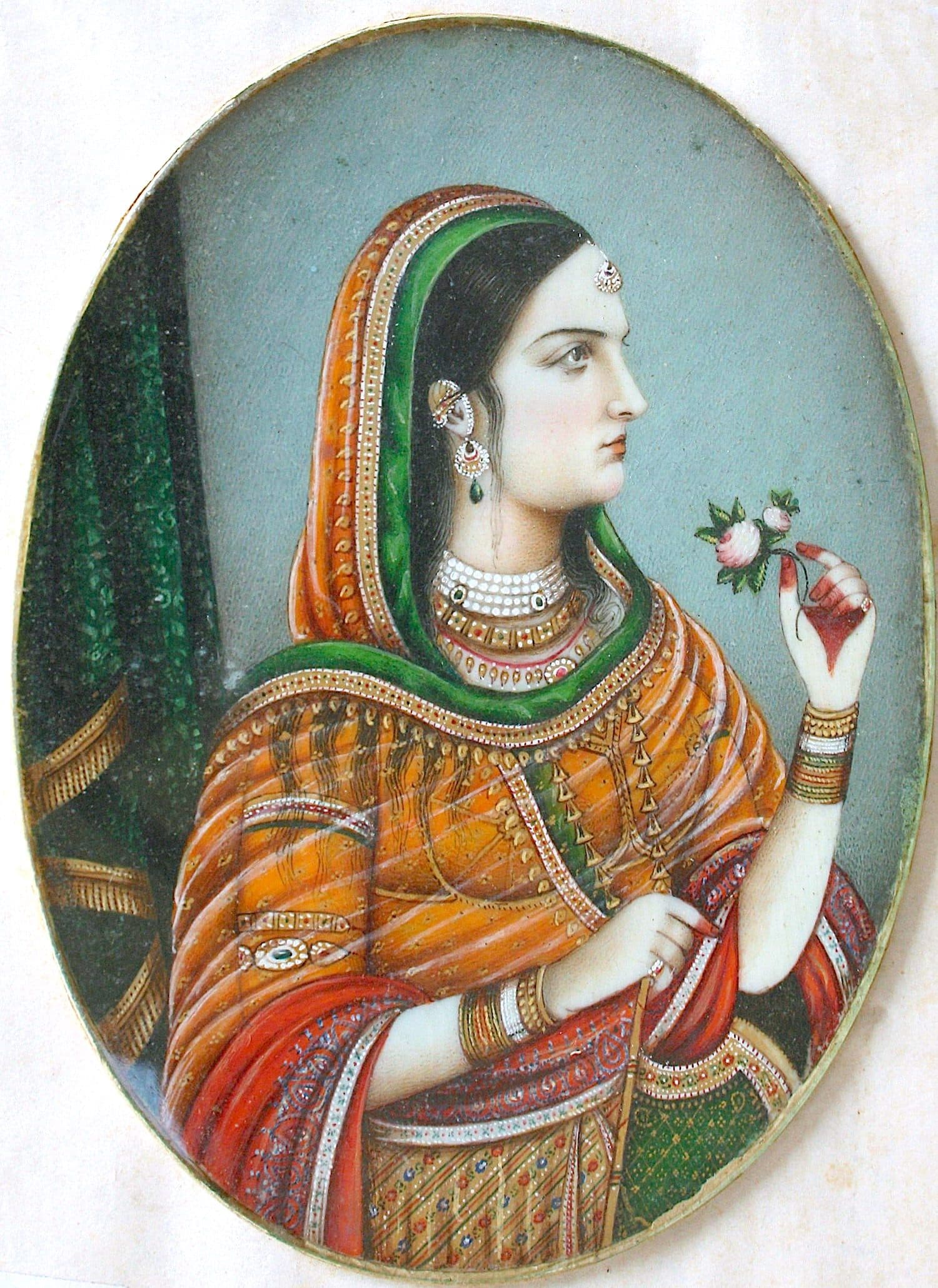
This empire controlled much of northern and central India, often clashing with southern Indian kingdoms like the Ahmednagar, Golconda, and Bijapur Sultanates, and even the British Empire. These battles shaped the empire, but its internal culture had a greater impact on its art and jewelry.
Jewelry in the Mughal era symbolized social status. The Mughals valued artistic skills, especially in jewelry making, leading to new styles and techniques. The empire’s mix of Muslim and Hindu populations, though sometimes in conflict, enriched its art, giving Mughal jewelry a blend of different cultural styles.
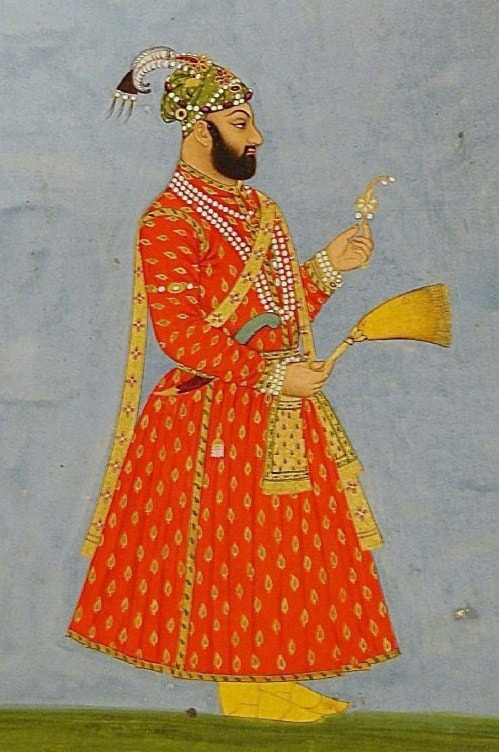
The Mughals also engaged with neighboring Indian states, especially through peaceful relations and marriages with Rajput rulers. These interactions added more cultural elements to their jewelry designs. The
Mughal jewelry style, known for detailed designs and extensive use of gems, reflects this cultural blend. Today, the unique artistry and diversity of Mughal jewelry still inspire modern designs, symbolizing India’s rich historical and artistic heritage.
Characteristics of Mughal Jewelry
The cultural diversity of the Mughal Empire meant an incredible variety of jewelry types, designs, styles, motifs, materials used, colors, technical innovations, and more.
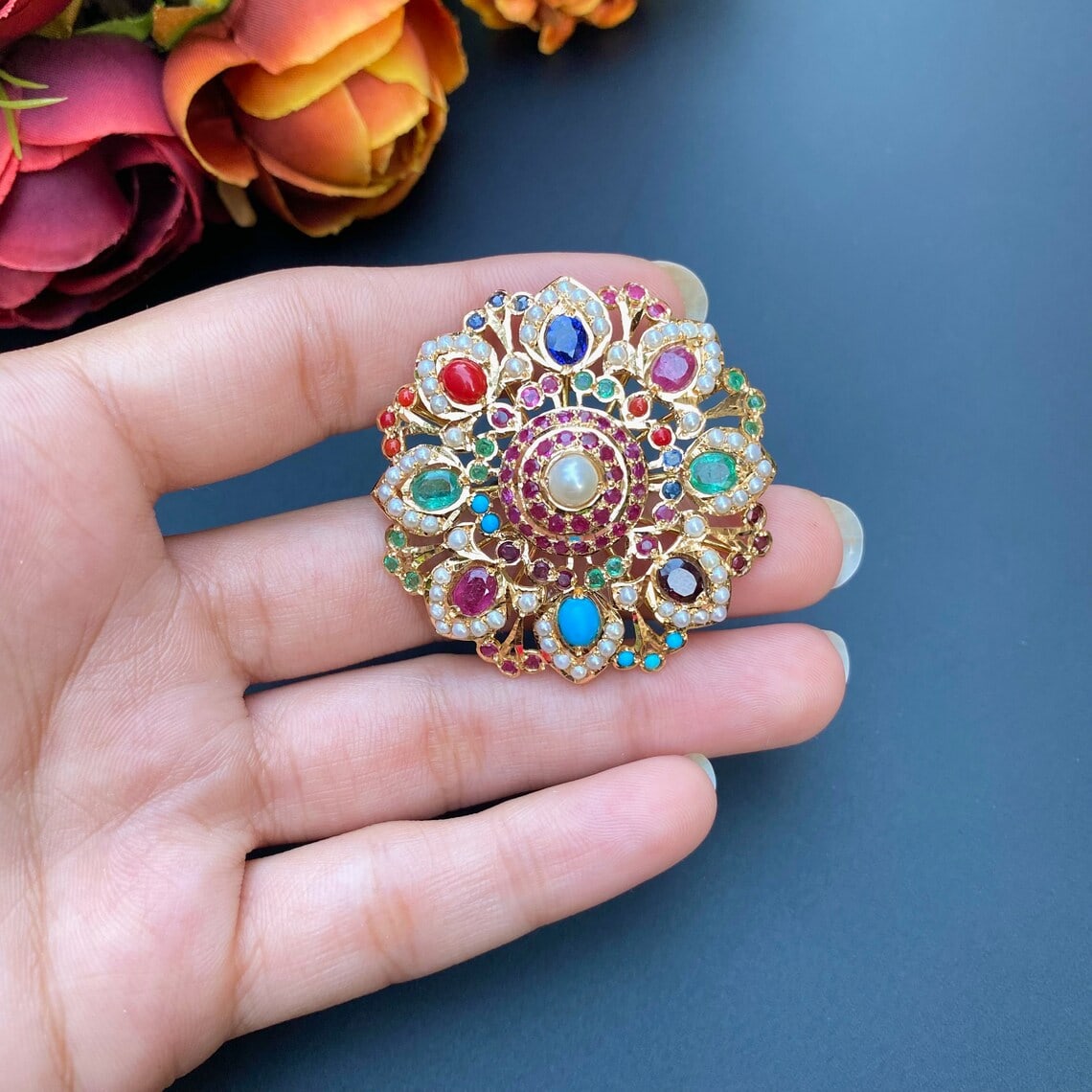
Probably the first big characteristic to mention, however, should be the abundance of precious and semi-precious gemstones in Mughal jewelry. This should come as no surprise given how incredibly rich with precious gemstones the Indian subcontinent is.
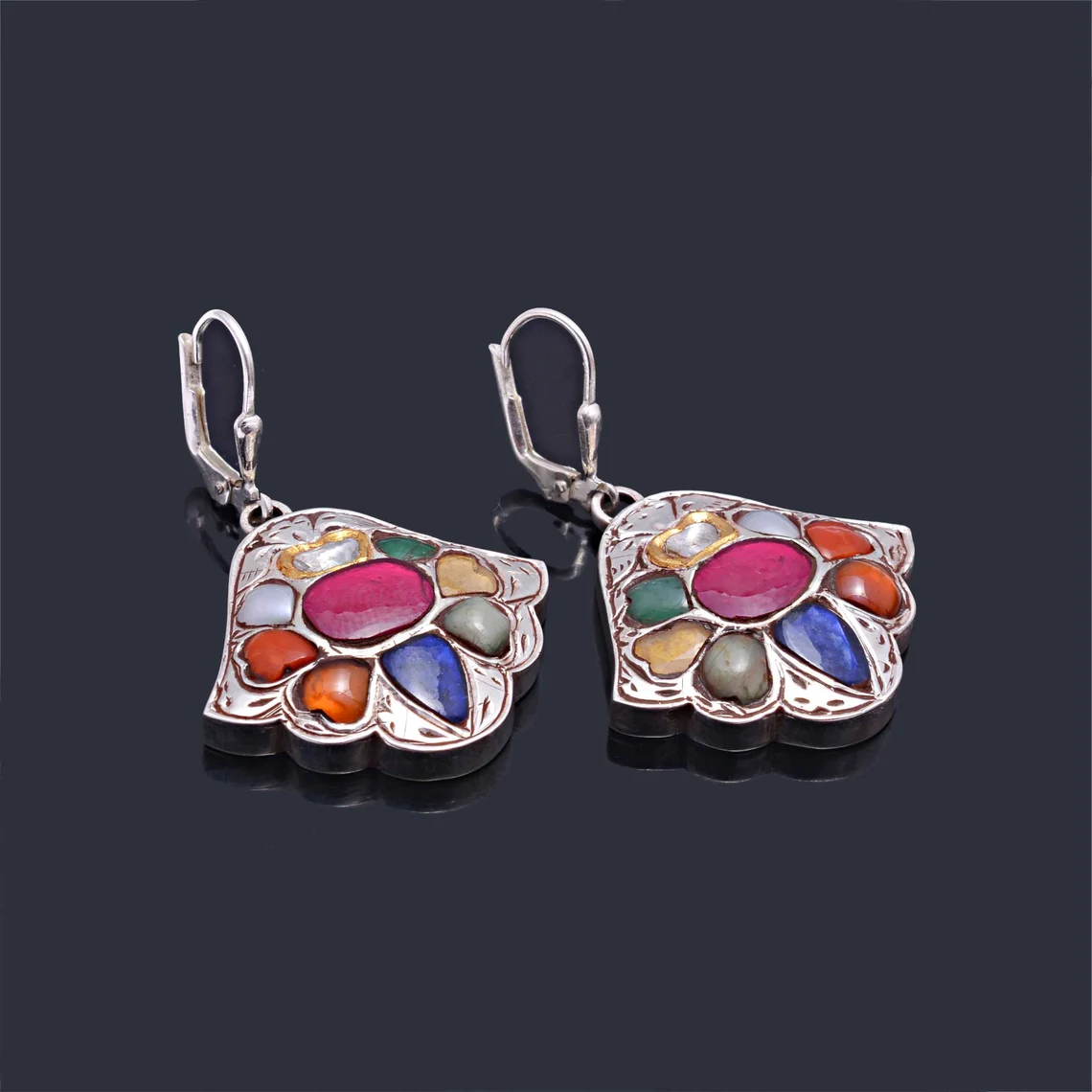
Emeralds, rubies, diamonds, sapphires, pearls, tourmaline, turquoise, jade, topaz, and other types of precious gemstones were used in abundance. The metals they were most commonly embedded in was solid gold or gold-plated silver. The Mughal dynasty was also incredibly rich and had these metals in abundance.
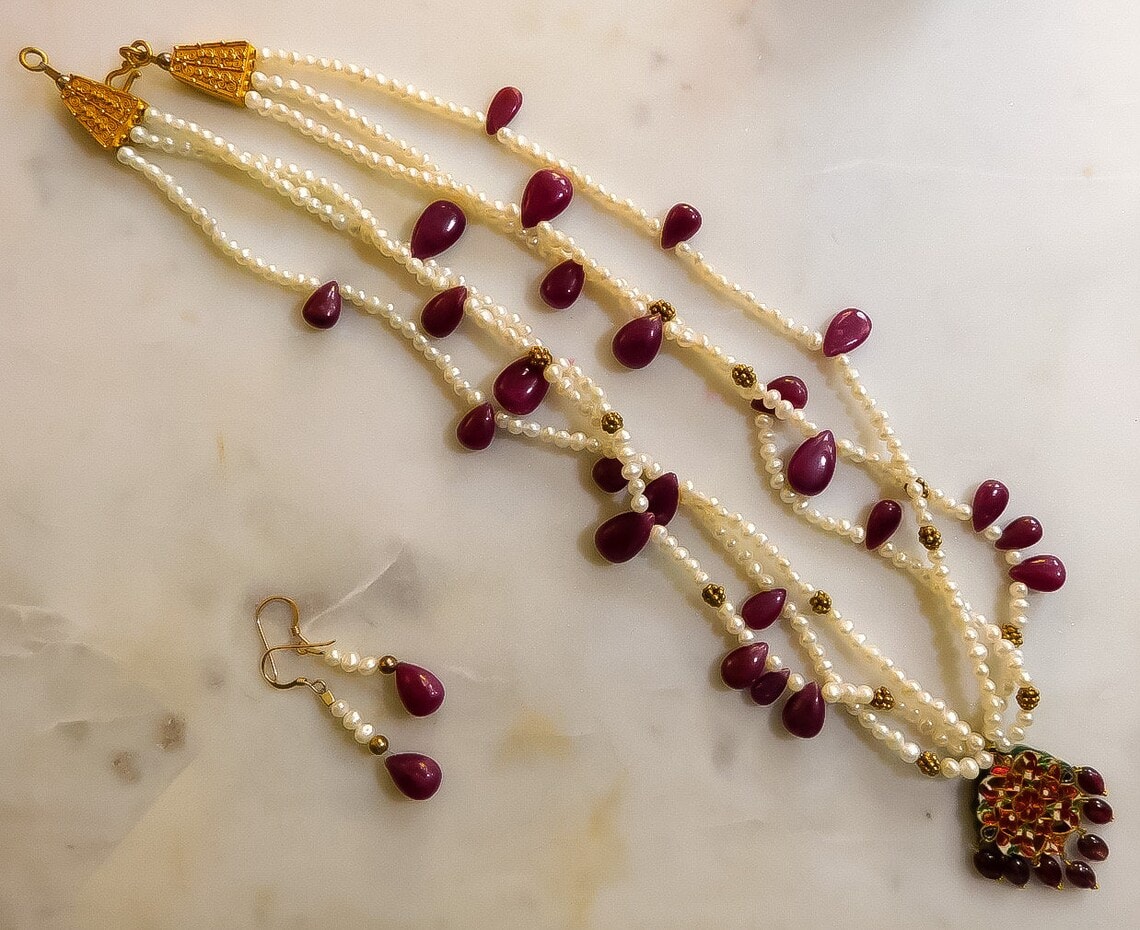
Mughal goldsmiths also made great strides in perfecting gold jewelry and were able to achieve impressively intricate and beautiful details in their gold jewelry.
That, together with the many major improvements in stonework and enameling meant that Mughal jewelry was made in detailed designs never before seen in India or abroad.
The combination of that many multi-colored precious gemstones, intricate goldsmithing, and perfected enameling, together with the multi-cultural reality of the Mughal Empire, meant that “diversity” becomes the main word to use to characterize Mughal jewelry.
In essence, Mughal jewelry was so colorful and complex that jewelers expertly portrayed entire religious scenes on it, as well as other mythological figures, huge floral themes, and more. Color, scale, and abundance were the things every Mughal jeweler was aiming for, and most achieved those in a spectacular fashion.
Types of Mughal Jewelry
The craftwork of Indian Mughal jewelry was quite different from what the rest of the world had seen at the time. It included various unique techniques and designs that were specific to India and the jewelers and craftsmen at the time were quite eager to incorporate them into every type of jewelry.
For example, Polki and Kundan necklaces are some of the most iconic types of north-Indian Mughal jewelry.
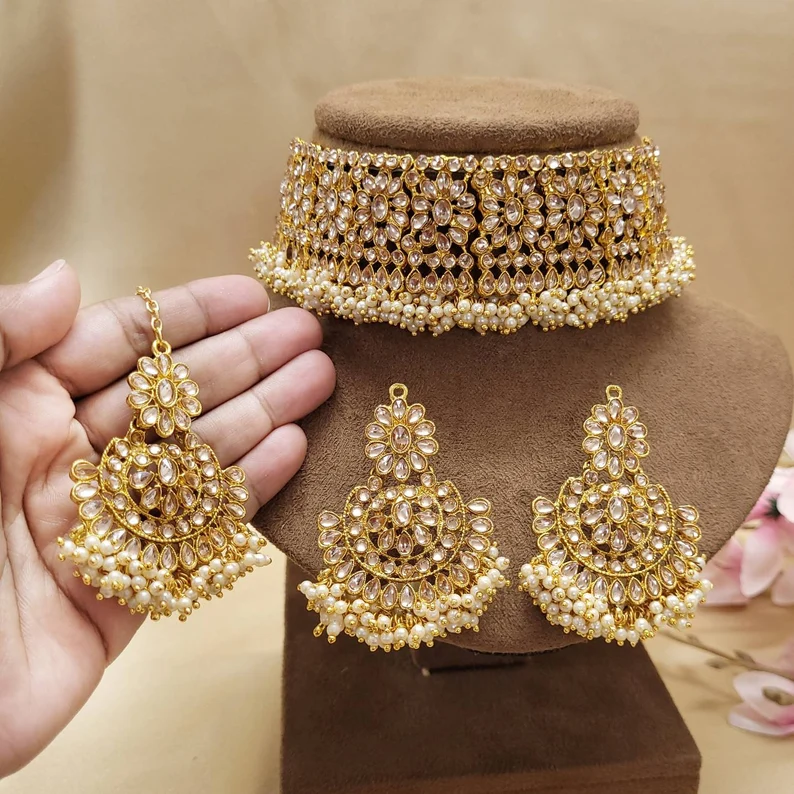
Polki refers to the white uncolored uncut diamonds that were popular in India, whereas Kundan was a type of refined 24K gold jewelry base, sometimes with a wax core, that jewelers had specialized for over 2,500 years.
During the Mughal period that meant massive and luxurious gold and diamond pieces that were worthy of the nobility in India.
The terms Polki and Kundan didn’t refer to just necklaces, of course – these were just methods of crafting diamond and gold, and those were used for all other types of jewelry such as bangles, bracelets, earrings, rings, nose rings, turban and head jewelry, and more.
With the Mughal dynasty being Muslim, turban and head jewelry were especially common during that period. The Mughal emperors covered their silk turbans with the most extravagant and feathery types of drooping decorative jewelry consisting of many series of golden chains, hooks, and precious gemstones.
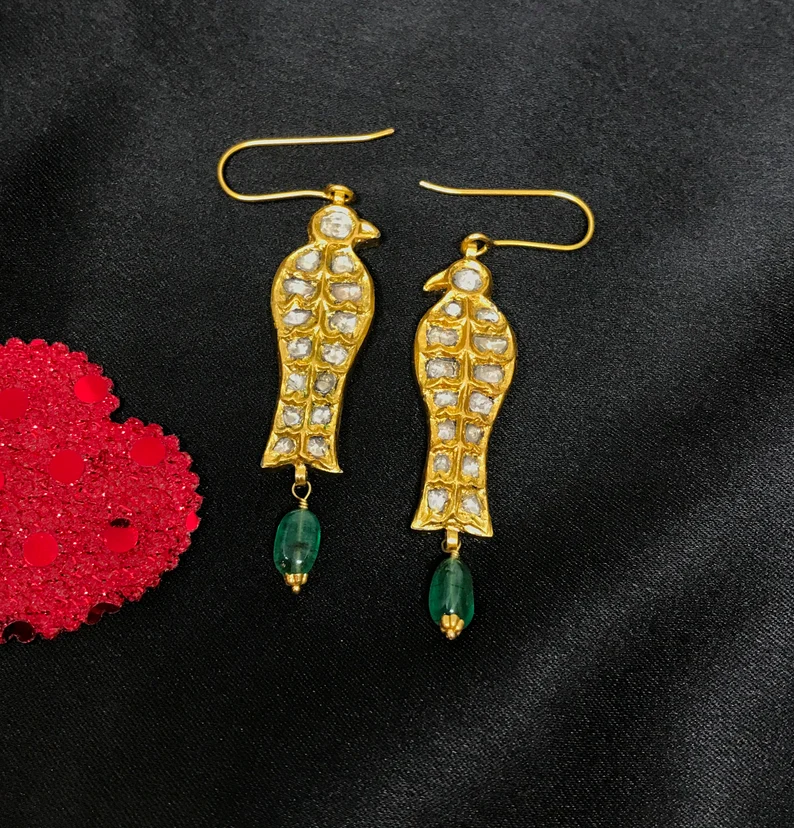
Earrings didn’t take a backseat during the Mughal dynasty either, on the contrary – together with ear studs and earring strings, they were worn by Mughal emperors, courtiers, nobility, and even the middle class. The higher-up a person was, the more stunning an earring was, of course, with some being halfway to chandeliers.
Nose rings were also absurdly massive and detailed at times, though in most cases they were in the vein of small, delicate silver or gold pins studded with colorful gemstones or pearls. Even in the more “moderate” cases, however, nose chains were still quite popular.
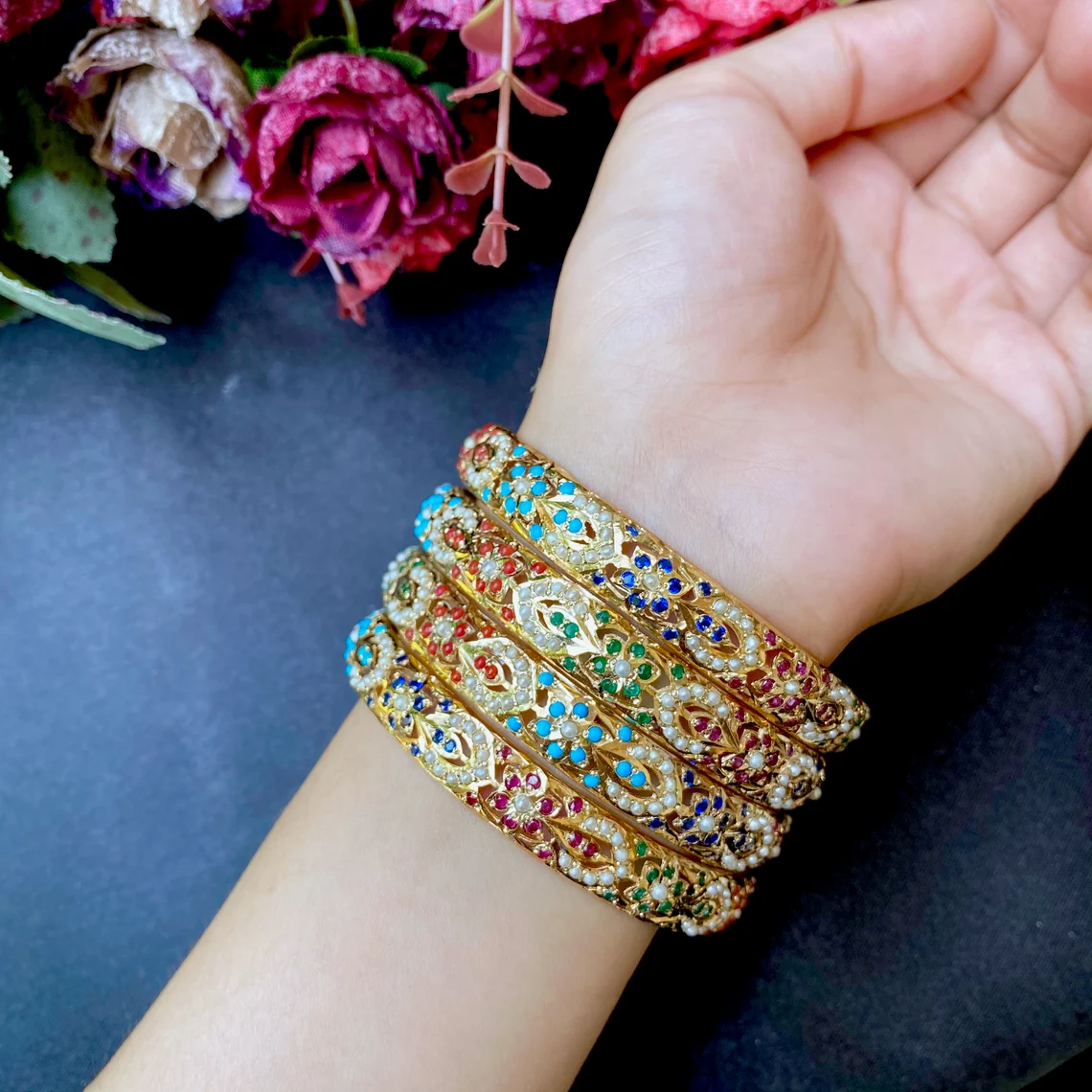
And then there are bangles and bracelets – the jewelry many westerners associate with the Mughal period in India, and rightly so. While bracelet jewelry was popular in India even before the Mughal Empire, during the Mughal dynasty bracelets became much more extravagant, rich, and colorful. Most bangles were made of solid gold covered with enamel in intricate floral designs and accompanied by various colorful gemstones.
Other hand jewelry and ornaments were also quite common, with some Mughal rings being so large and elaborate that they were made to cover two or three fingers instead of just one. Each ring piece was covered with other multiple small stones, however, or one huge diamond or gemstone – usually round or square, sometimes even just partly cut.
Other armlets, waists, belts, and hip chains during the Mughal period were also made of solid gold, covered with gemstones, and were as wide, thick, and extravagant as the person’s wealth and status would allow. Even jewel-studded heavy anklets were in fashion at the time.
Where Can I Find Mughal Jewelry Today?
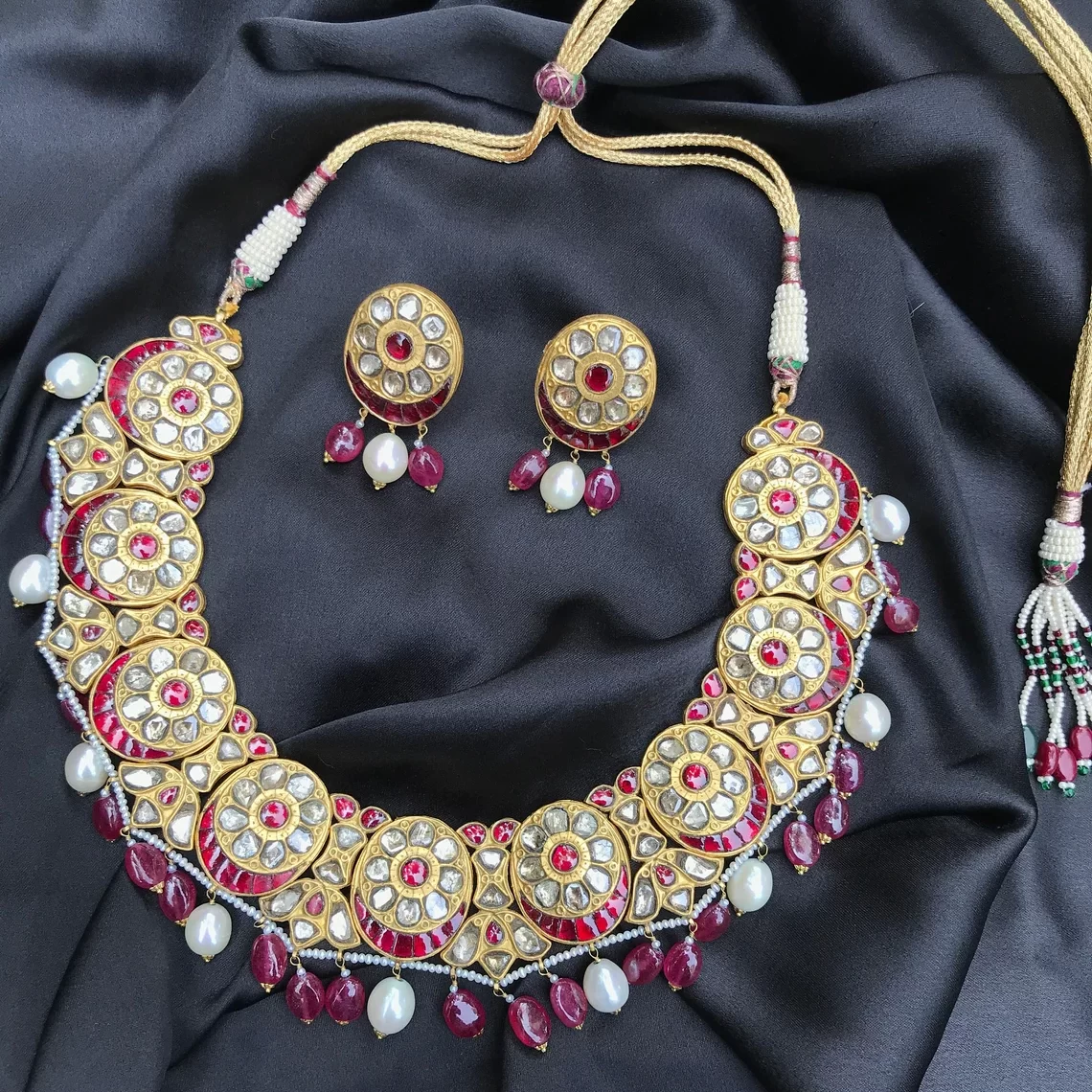
Authentic Mughal jewelry today can only be found in museums or in certain private collections. If you are looking for modern Mughal-style jewelry, however, that’s quite easy to find, considering that the Mughal style of jewelry is still in vogue.
Retailers both online and offline who specialize in Indian jewelry offer Mughal-inspired designs. We recommend checking out Kalki Fashion for its wide range of Indian jewelry.
Another excellent source is Etsy, where you can find modern, Mughal-inspired designs, as well as authentic vintage and antique pieces. Ensure that you do your due diligence when buying on Etsy, as each store has its own policies.
Does Mughal Jewelry Require Special Care?
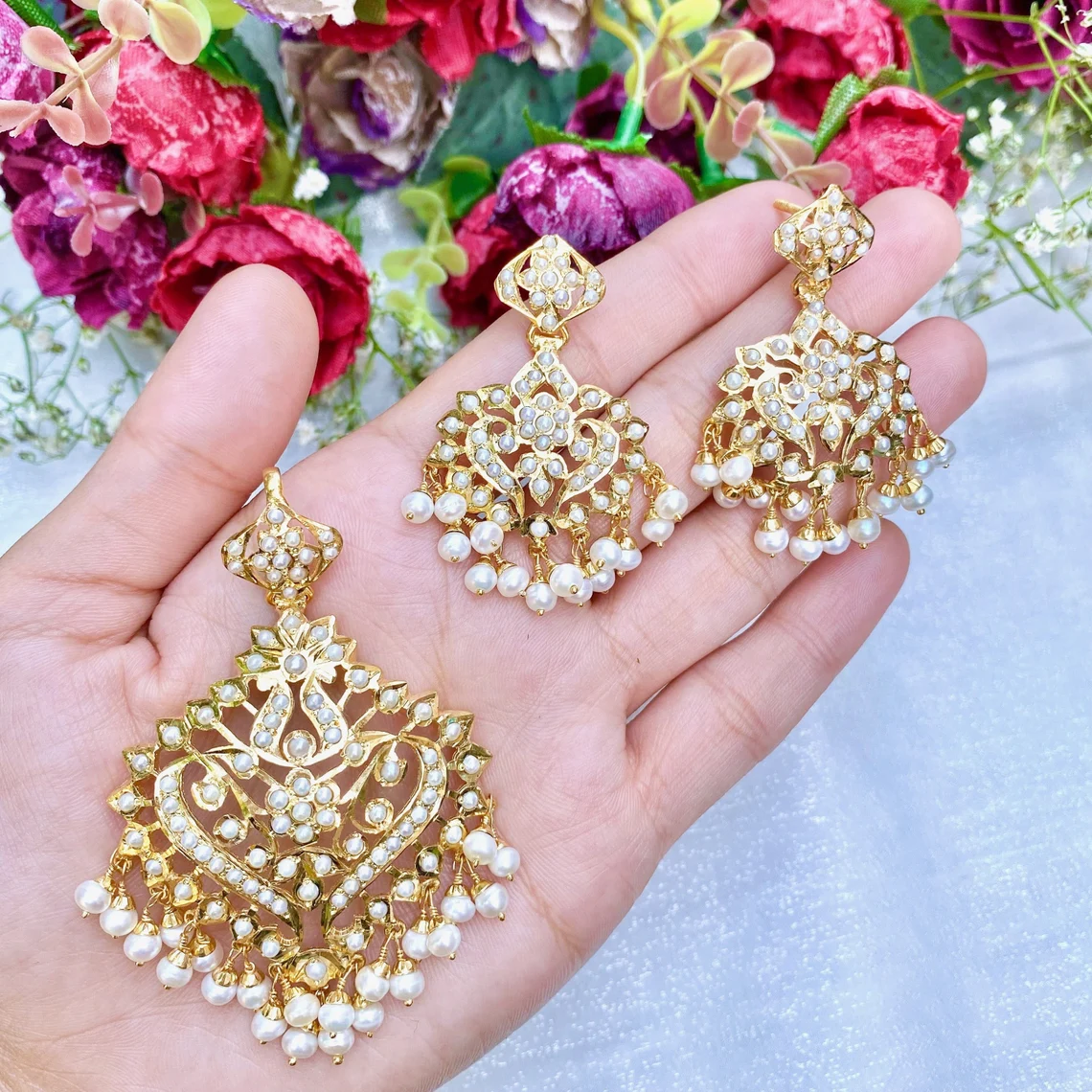
Mughal jewelry, with its detailed designs and fine workmanship, needs careful handling to keep it looking beautiful. These pieces, often decorated with precious stones and metals, can easily get damaged.
You should keep them away from strong chemicals, high or low temperatures, and wet conditions to prevent tarnishing or damaging the stones. Clean them regularly with a soft cloth to keep them shiny. Store them in a soft box or cloth pouch to avoid scratches and dust when you’re not wearing them.
It’s also a good idea to avoid wearing Mughal jewelry during activities that could scratch or hit them. Taking these steps will help keep your Mughal jewelry elegant and in good condition for a long time.
Interesting Facts about Mughal Jewelry
- Mughal jewelry often features designs inspired by nature, such as flowers, birds, and leaves, reflecting the Mughal emperors’ love for gardens and nature.
- The Mughals introduced the art of enameling, or Meenakari, to Indian jewelry, which involves fusing powdered colored glass to metal to create intricate patterns.
- They were pioneers in the use of the ‘Kundan’ technique, where gold foil is used to set stones into jewelry, creating a smooth finish.
- Each gemstone used in Mughal jewelry held symbolic meanings. For example, emeralds were believed to symbolize eternal life, while rubies represented power.
- The Mughal emperors established royal workshops, or ‘karkhanas’, where skilled artisans created exquisite jewelry pieces for the royal family.
- It was common for Mughal emperors to inscribe jewelry with personal messages or poetic verses, making each piece unique and historically significant.
- Mughal jewelry reflects a fusion of Indian, Persian, and Central Asian art forms, showcasing the multicultural aspect of the Mughal Empire.
- Mughal emperors, especially Akbar, Jahangir, and Shah Jahan, were great patrons of jewelry making, leading to a golden era of jewelry design during their reigns.
- The Mughals were known for developing new techniques in jewelry making, including the use of foil backing behind gemstones to enhance their color and brilliance.
- The Mughal emperors had a special fondness for spinels and pearls. Spinels, often mistaken for rubies, were a favorite of Emperor Akbar, while pearls were admired for their purity and elegance.
Wrapping Up
Mughal jewelry is the perfect symbol of one of the richest and most remarkable periods of Indian history. Together with the glorious architecture, sculptures, and other arts of that period, Mughal jewelry is a powerful reminder of just how successful and impressive India was before the time of British colonization.
Even though Mughal jewelry was briefly forgotten by history during the 19th and 20th centuries, it has recently come back in fashion with various Indian movies bringing people’s attention back to that Golden Age of Indian wealth, culture, arts, and crafts.









